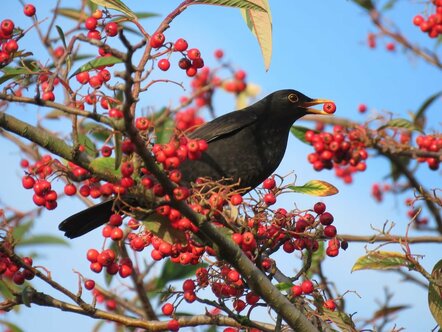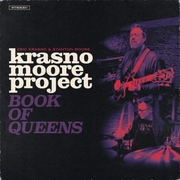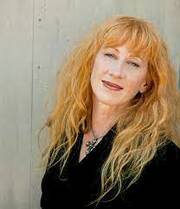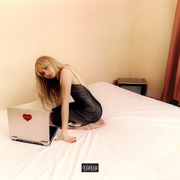New York, NY (Top40 Charts) As the
Oscars ended we can talk about something timeless. Animals were and are an infinite source of the creating force of art. And it doesn't end with one genre or art type; animals can be found in any corner and side of the art world.
Music takes no less part of this. In this article, we will investigate this theme and will catch some of the "tails" in music history.
Olivier Messiaen and his birds
"Listen to the birds - they are great masters"
So said the composer Paul Dukas to his young student Olivier Messiaen.
"I confess that, without waiting for this advice, I admired, analyzed, and recorded the singing of birds. Their simultaneous singing gives rise to an excellent combination of mixed rhythmic pedals. The melodic lines of birds singing, especially blackbirds, surpass the human imagination, "said Messiaen.
"And although it will be a funny, slavish, imitation of nature, I am going to create a bird-like melody that will be a modified copy and not an exact reproduction of the hail of trills of our little servants of spiritual joy."
Messiaen turns to nature and, in particular, to the singing of birds. He even begins to take an interest in ornithology, and ornithology classes, according to the composer, "were not only support in musical searches but also a "health element".
But in the compositions of the 1950s, bird singing turns from a decorative element into a "protagonist", where, according to the author, "there is nothing but the singing of birds: everything is heard in the forest and is absolutely authentic".
Messiaen's admiration for nature is reflected in the pantheistic orientation of his ideas, musical language, and means of expression during this period. According to Messiaen, "nature is infinitely more perfect than us, it ... miraculously beautiful and pacifying".And further, "I see in nature the appearance of one of the Divine faces. However, the creations of God are not the essence of God himself.
The main works in which Olivier Messiaen relied on material obtained by him in ornithological expeditions are The Blackbird, The Awakening of the Birds, Exotic Birds, and the Catalog of Birds. These are the works of Messiaen of the so-called "bird twitter". In them, the composer strove for a scrupulous, documentary-accurate, musical notation of birds singing.
In comments or prefaces to these works, the composer often gives a detailed description of the places and times when the recordings of birds singing were made and marks the names of birds in the score.
Thus, in the explanatory note to The Awakening of the Birds, the composer writes: "There is nothing in this score but the singing of birds. All of them were heard in the forest and are completely reliable. The instruments try to reproduce their intros and timbres. The name of each bird at the moment it sings is indicated in the score above the instrument that represents it. Which is quite honoring for the "original" composer and inspiration.
Our favorite cats in the music history
The boom of cat mania began much earlier than the century of the Internet, YouTube, and Instagram. Magnificent black savannah cat or funny Scottish short-haired cat and other furry friends overtook our hearts and souls. But these mysterious creatures took possession of human souls much earlier, as evidenced by the entire history of painting and classical music.
Heinrich von Bieber "Cat"
Bieber was a 17th-century Austrian violinist and composer known for his experimentation with the violin.
This piece is part of his Sonata for Violin and Bass called "Sonata representative". It is more like a suite than a sonata because it consists of nine parts and represents different images.
Domenico Scarlatti. Sonata for Clavier "Cat's Fugue".
If this fugue had not been called "cat's", it would certainly have been lost among his other five hundred sonatas. However, it sounds very interesting. The sequence of the first six sounds of its theme looks somewhat strange: very similar to the "footprints" of a cat that walked along the harpsichord keyboard.
John Noble "Cat Suite"
The English composer John Noble cannot be called a classic, not the scale of creativity. He lived his life in his native Yorkshire, working as a music teacher, and did not write very many compositions. Only his "Cat Suite" for clarinet and piano was published during his lifetime and became very popular with clarinetists and the public.
It has five parts. Each is named after some friend of the composer's cat: the list includes Beethoven, Mozart, Peppin, and Sammy. This is the first piece dedicated to a cat named Oscar.
Aaron Copland "Cat and Mouse"
Probably, for many home cats fed by humans, mice have already gone into the realm of legends. But there were times when there were many mice, and all cats were hunters and protectors of the master's supplies and not just decorative creatures.
This is what about is a picturesque play by the American classic Aaron Copland. It was written, by the way, 20 years before Tom and Jerry.
Great zoological fantasy - this is the subtitle Saint-Saens himself gave to his famous cycle "Carnival of the Animals". This one of the most famous and loved by listeners of classical works appeared in 1886, but the cycle was published at the request of the author only after his death.
Fourteen numbers of "Carnival ..." are filled with humor, allusions, musical quotations, and sound effects. Fantasies rush past the listeners with huge leaps of kangaroos. To achieve this effect, Saint-Saens "scattered" fast staccato (jerky) chords over the keyboards of two pianos.
Against the background of a bravura and brilliant march, the formidable roar of the king of beasts is heard (rolling and assertive passages).
Not far away, hens and roosters cackle, and somewhere in the forest the call of a cuckoo is heard (its role is entrusted to the clarinet).
But right next to us, a "character with long ears" minces, we learn about his approach through a signature cry.
The lingering and creaky donkey sound is encrypted by the composer in huge uncomfortable jumps performed by the violins.
The lyrical center of the cycle is the beautiful "Swan" performed by the cello (this is the same music to which Anna Pavlova danced her "Dying Man ...").
A heavy elephant comes to the carnival along with a double bass. This massive and clumsy instrument plays a soaring waltz theme in a cycle, reminiscent of a Berlioz work.
The slow "Turtles" in Saint-Saens' fantasy are also marked by interesting musical references: they move smoothly to the intonations of ... the famous can-can from Offenbach's operetta.
In another issue (Fossils), the ear picks up another familiar motif, this time from Rosina's cavatina from Rossini's The Barber of Seville. In "Carnival" Saint-Saens quotes not only his colleagues but also himself: in the same "Fossils" the theme from the "Dance of Death" appears.
Not only famous composers and animals are "present" at the carnival, but also ... "Pianists" - in their number two pianos compete furiously in playing scale passages. The instruments assigned by the composer to this or that character brightly characterize the heroes of the carnival with the help of the peculiarities of the timbres of their voices.
























